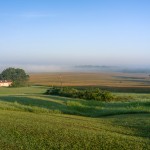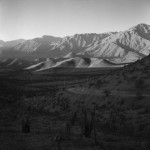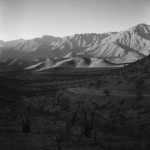Indigenous Photographers Week: Kapulei Flores

©Kapulei Flores, No ka lāhui (for the people), 2019. During the 2019 frontline stance for Mauna Kea we saw how powerful our communities are, especailly when we come together. Pictured are members of the makaliʻi ʻohana who have been pillars of our communities and to me represent all the beautiful things that can be created when people come together to support eachother and make things happen.
Kapulei Flores is a Kanaka Maoli, Native Hawaiian, from the Moku o Keawe, also known as Hawaiʻi Island. She is a photographer focused on capturing authentic moments and showing a perspective of Hawaiʻi through native eyes. Her goal is to use photography as a tool with activism and perpetuating the culture of Hawaiʻi. Kapulei says, “Ever since I was young, I have used photography to capture the culture and activism of my family and community. Over the years it has turned into an outlet to provide insight into the activism of my family, my community, and the culture of my people. My family and I have been involved in the efforts to Protect Mauna Kea for over ten years and it has enabled us to connect withmany other Indigenous people around the world”.
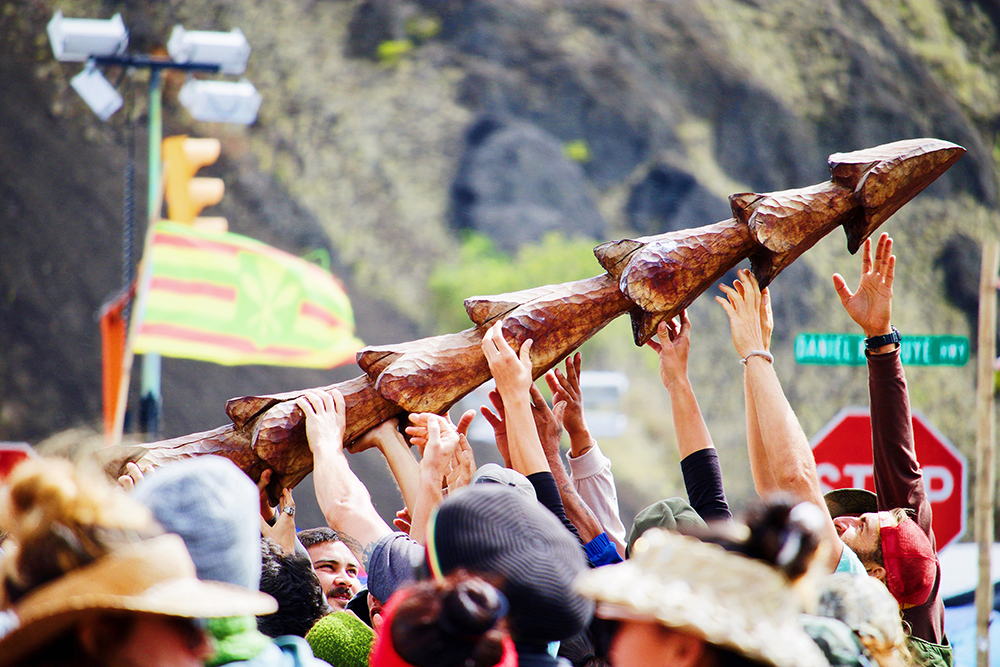
©Kapulei Flores, Together we rise, July 2019. During the Protect Mauna Kea Movement in 2019 there were traditional kiʻi (carved statues) that were created and presented on Mauna Kea. One of the kiʻi was so tall that it took the masses of people working together to stand it up and take it down. The way everyone around didn’t even hesitate to help because they understood the significance of kiʻi in Hawaiian culture and wanted to be a part of taking care of it. It reminds me of the importance of community and how it truly does take people coming together to make change.
Kapulei Flores is a Kanaka Maoli (Native Hawaiian) from the Moku o Keawe, also known as Hawaiʻi Island. She is a photographer focused on capturing authentic moments and showing a perspective of Hawaiʻi through native eyes. Her goal is to use photography as a tool with activism and perpetuating the culture of Hawaiʻi. For 10+ years Kapulei along with her family have been involved in the Protect Mauna Kea Movement, which has allowed her to document her family’s journey throughout this movement as well as other frontlines around the world. Through documenting different cultural events, ceremonies, and movements she has had her work and story of photography and Mauna Kea be featured in Teen Vogue, Buzzfeed News, Vox, Ms. Magazine’s 25 under 25, and more. With photography she hopes to share a glimpse of the sacred place she calls home as well as the beauty of her people actively continuing traditions that have been carried on for generations. She strives to shed light on the mistruths often told about Hawaiʻi and spread awareness to the many overlapping issues in Hawaiʻi that Hawaiians face daily. She has helped to put together a series of exhibits as well as having her work featured in exhibits like Indigenous Photograph, Photoville, and Illuminative. As of now she works for Mauna Kea Education and Awareness (MKEA), runs the @protectmaunakea Instagram, as well as having her own photography account called @kapzphotography.
Flores’ work was featured in Assembly magazine through the Malala Organization and in the Indigenous Futures Storytelling Exhibit.

©Kapulei Flores, Aloha ʻāina, July 2019. Aloha ʻāina is a term with many meanings and layers of its significance to Hawaiʻi. For me it means a love for the land so strong that you’re willing to put your life on the line to save what you hold sacred. As Hawaiians our connection to the land is geneological, its generational, its spiritual, and for us the land is a part of our life line. Those who stand for the protection of sacred land even when facing the unknown, like those in this photo, are what inspire me to stand for my ʻāina (land) and people.
Oftentimes the things that are said and heard about Hawaiʻi are coming from a foreign outside perspective, which is why I strive to tell the stories of Hawaiʻi from a native perspective. Giving an insight to the connection I have with my ʻāina hānau, place of birth, as well as the connection between us as Hawaiians and the land we come from. I want to share even a glimpse of what its like to live in Hawaiʻi as a Hawaiian who is actively trying to protect their land from destruction, overdevelopment, and the military. As I’m also trying to practice my culture in the best way I can while living under a government system that is set up to make it hard to be Hawaiian in Hawaiʻi. Sharing the beauty and heartaches through my photography that comes with existing as a Hawaiian who practices their culture and fights to protect their land to make sure there is a Hawaiʻi left for the future generations. – Kapulei Flores

©Kapulei Flores, For the future generations, July 2019. The main reason that many of us stand for our sacred places and our land is because we want to leave this place better for the next generations. I stand because I want there to be a Hawaiʻi left for the next seven generations that isn’t overrun by development and destruction. I want a Hawaiʻi that is healthy enough and cared for in a way that our natural resources can support our communities instead of being mismanaged and ruined.
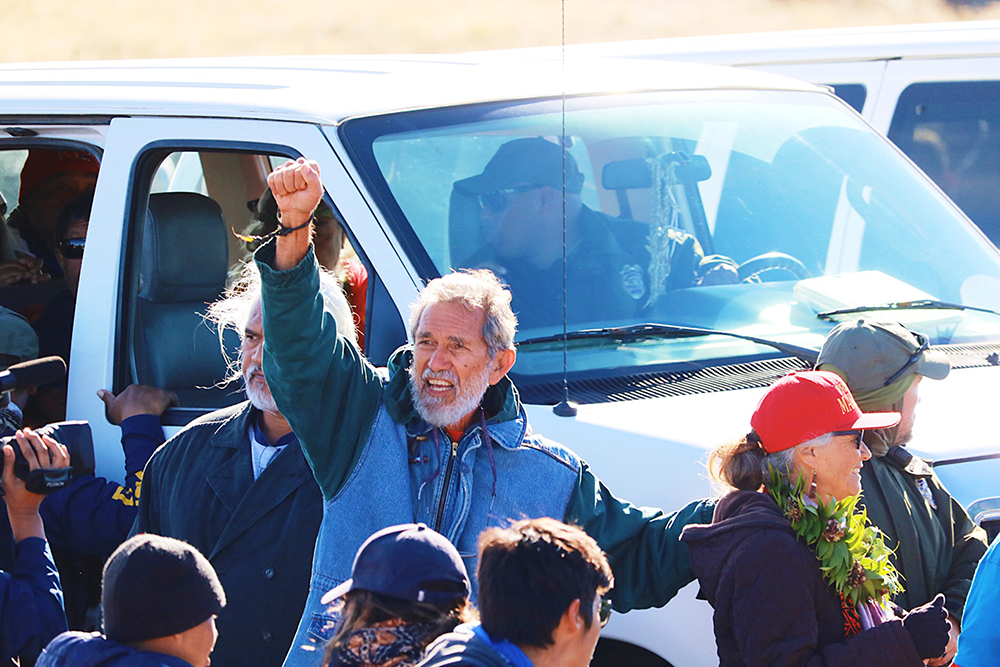
©Kapulei Flores, Haʻaheo (proud), July 2019. On this day our kūpuna were arrested while peacefully protesting and preventing construction trucks from going up to Mauna Kea. Pictured is Uncle Walter Ritte who has been an aloha ʻāina (land) activist that has shaped our community and was a big part of the Protect Kahoʻolawe movement that stopped the militarys bombing on Kahoʻolawe. Even though he was being arrested you could see the pride he had and held for our people and our land.

©Kapulei Flores, Hold your hae high, July 2019. During the frontline stance in 2019 for the Protect Mauna Kea Movement, seeing the Hawaiian flag upside was a common thing. Historically our flag was flown upside down when our nation was in distress, so many of our people flew our flag upside down due to the mistreatment of our people and our land, including the proposed building of the TMT. Whether youʻre flying the flag upright or upside down, we always say to fly our hae (flag) high and proud no matter what.
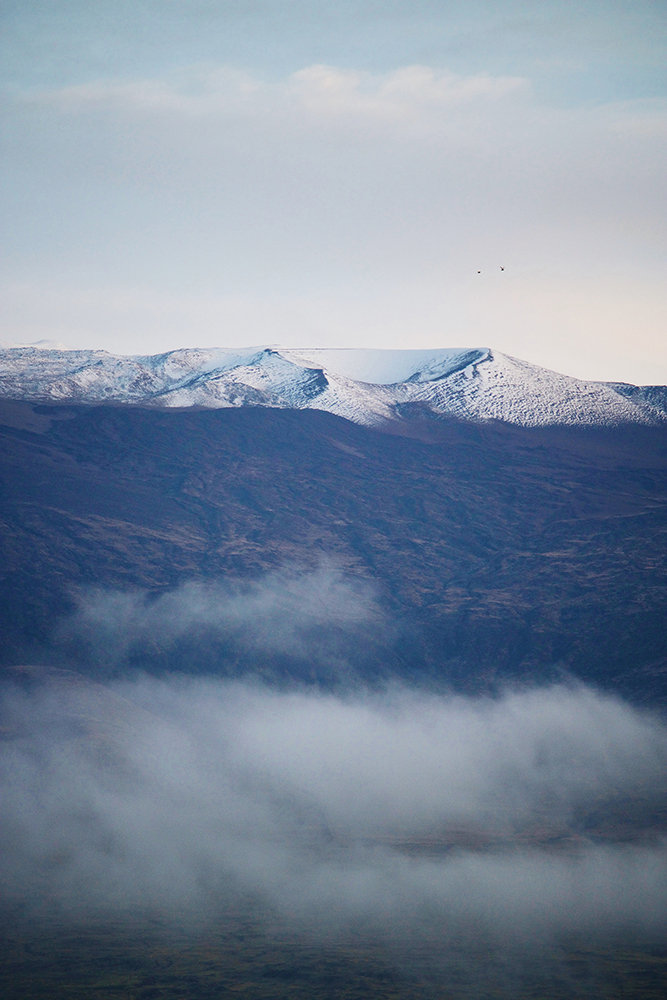
©Kapulei Flores, Mauna Kea, Dec 2021. The majestic Mauna Kea, the thing me and thousands of people around the world have come together to do everything we can to protect this sacred mountain from further destruction and desecration.

©Kapulei Flores, The start of the kūpuna line, July 2019. At the beginning of the 2019 frontline stance for Mauna Kea, our kūpuna (elders) put themselves in the middle of the road to prevent any potential construction trucks. The was the beginning of what turned into the kūpuna tent(s) where the pillars of our communities held their ground to prevent TMT construction trucks from going up the Mauna.
Posts on Lenscratch may not be reproduced without the permission of the Lenscratch staff and the photographer.
Recommended
-
The 2024 Lenscratch 1st Place Student Prize Winner: Mosfiqur Rahman JohanJuly 22nd, 2024
-
Ellen Mahaffy: A Life UndoneJuly 4th, 2024
-
Julianne Clark: After MaxineJuly 3rd, 2024
-
Kaitlyn Jo Smith: Super8 (1967-87, 2017), 2017June 30th, 2024
-
Katie Prock: Yesterday We Were GirlsJune 27th, 2024























